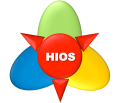(Quantum) Hybrid Systems
| Staff members: | Dr. Günter Kewes, M.Sc. Martin Rothe |
| Collaborators: | Yan Lu and Yuhang Zhao (Helmholtz-Zentrum Berlin) |
|
Fundings through: |
|
 |
|
General concept of Hybrid Inorganic/Organic Systems (HIOS)
The Collaborative Research Centre HIOS (SFB 951) is an interdisciplinary effort bringing together scientists with complementary expertise from three universities and four non-university institutions. The goal is the merger of inorganic semiconductors, conjugated organic materials, and metal nanostructures into novel hybrid structures. Elucidating and tailoring the fundamental chemical, electronic, and photonic interactions in these systems will enable us the development of functional elements exhibiting superior opto-electronic functionalities not achievable with any of the individual material classes alone.
Subproject B18
The central goal of this project is to realize an ultra-small light source or detector for infrared photons. To this end, we pursue the construction of a resonant tunnel junction with extreme plasmonic enhancement. To achieve this goal, we utilize tunnel junctions that form in the narrow gap of an electrically contacted plasmonic nanoparticle-on-mirror (NPoM) antenna. A specifically designed hybrid inorganic/organic system (HIOS) (with suitably aligned energy levels) placed inside the gap enables a high photon extraction or detection yield.
Figure 1: Maxwell simulations of a NPoM with a sphere of radius R = 22.5nm to estimate the antenna performance for photon creation (tunnel-currents create a dipole moment along the direction of flow) a) Log. intensity (left) of the field computed with an eigensolver, i.e., the resonant mirror-image mode and modal Purcell factor for a dipole emitter in resonance oriented along the y-axis (right). The white dashed line marks the cylinder symmetry axis of the structure. b) Total Purcell factor (uppermost blue curve) and modal Purcell factor (solid orange curve). In the difference curve between the total and modal Purcell factor (dash-dotted purple), only the broad feature at around 530nm (2.4 eV) remains, which corresponds to a pseudo-mode formed by a multitude of higher order modes. The flat red curve shows for comparison the decay contribution of the two planar gold surfaces (sphere’s surface and film). [1]

Figure 2: Dark field image (left) and spectra (right) of NPoM antennas. The red line corresponds to scattered light for p-polarized excitation (which excites the resonant NPoM mode with upright standing dipole moment), the blue line corresponds to excitation with s-polarized light.
[1] G. Kewes, et al., ACS Phot. 5, 4089 (2018)
Contact: Dr. Günter Kewes
Subproject B2
The main goal of this subproject is to establish surface plasmon polariton directional propagation by a chiral hybrid inorganic-organic system. Assembled plasmonic nanoparticles does not only confine light fields to a sub-diffractive volume, but also shape and enhance the optical chirality in the near-field. For this project, Silver nanowires were specifically designed and synthesized. A nanometer-thin, smooth silica shell around our nanowires provide distance control to the environment. Furthermore, fluorescence of encapsulated molecules detect the propagating plasmons. With the addition of a single plasmonic nanosphere, we have demonstrated chiral coupling and directive plasmon launching along the nanowire. The chirality sensitivity of this effect, and the translation to directionally launched plasmons, paves the way for optical determination of the structural chirality of hybrid inorganic-organic systems with spatial resolution far below the diffraction limit of light.
Figure 1: Silver nanowires as plasmonic waveguides. The ultra-smooth silica shell, as visible under transmission electron microscopy (TEM), provide nm-precise distance control. Optical dark-field (DF) scattering spectroscopy visualize the resonator properties due to back reflection of the plasmon at the end facets. [1]
Figure 2: Local chirality sensor from self-assembly a single nanowire and a nanosphere. Systems were characterized by scanning electron microscopy (SEM) and optical dark-field (DF) imaging. Chiral coupling and directive plasmon launching becomes visible by photoluminescence (PL) imaging of embedded fluorescent dyes. Near-field simulation reveals a confined region of enhanced chirality, which will enable sub-diffractive structural chirality sensing. [2]
[1] M. Rothe, et al., Sci. Rep. 9, 3859 (2019)
[2] M. Rothe, et al., ACS Nano 15, 351-361 (2021)
Contact: M.Sc. Martin Rothe



